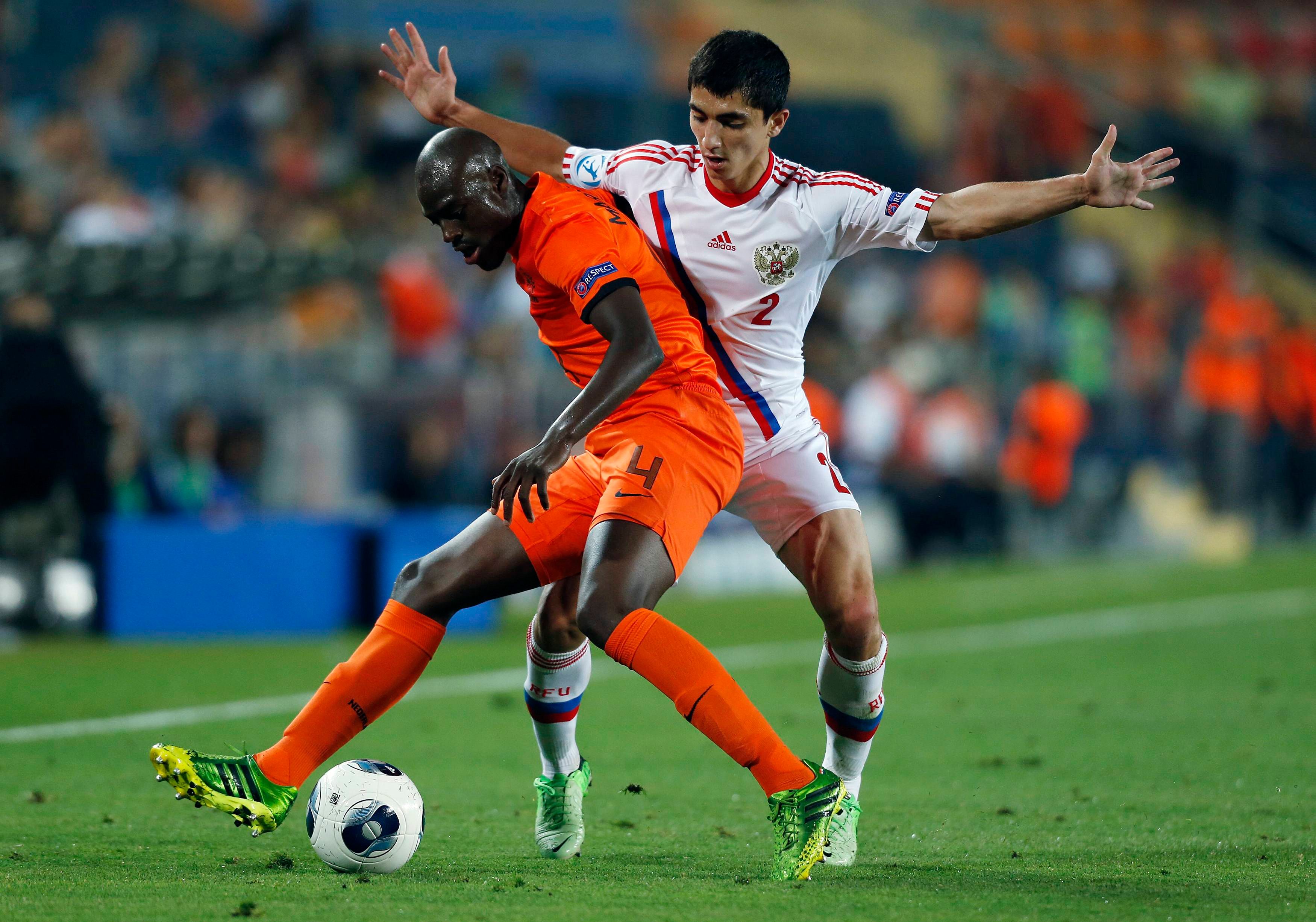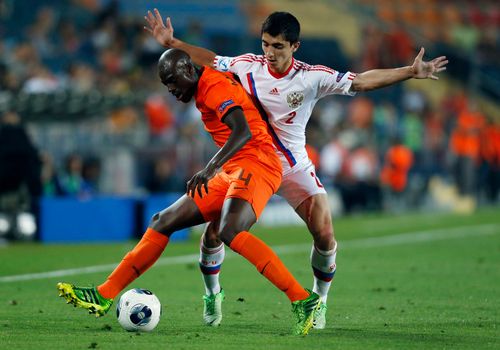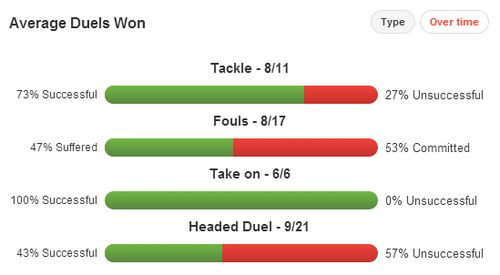
Spurs should target this powerful defender with world-class potential

Martins Indi of the Netherlands fights for the ball with Tsallagov of Russia during their UEFA European Under-21 Championship soccer match at the Teddy Kollek stadium in Jerusalem
Feyenoord have seen a lot of promising talent leave their ranks in recent years for pastures new, from academy players like Kyle Ebecilio, Karim Rekik, and Nathan Ake to first-team players like Leroy Fer, Georginio Wijnaldum, and Luc Castaignos. According to manager Ronald Koeman, another looks set to leave De Kuip stadium in defender Bruno Martins Indi.
“Sometimes you can’t stand in the way of a player who needs a bigger stage to develop into a world-class player,” Koeman said, quoted in the Sky Sports. “We have two or three players who we may have to sell, and Bruno is one of them.”
That will surely put a lot of clubs on red alert. Sky Sports have listed Everton as one of them. This is understandable, given Sylvain Distin is 35. Twenty-one-year-old Martins Indi would be a like-for-like replacement for the Frenchman, given he too is a centre-back who can play at left full-back. But having raised questions about Tottenham Hotspur’s central defensive options in this article, they should be interested too.
He’d be a like-for-like understudy for Jan Vertonghen, who can also play at left full-back in addition to centre-back. Averaging 1.1 tackles per game so far this season, he isn’t aggressive in the challenge like his partner Stefan de Vrij, who is averaging two tackles per game. Martins Indi prefers to tackle conservatively rather than dive in. He commits less fouls in so doing, averaging 0.9 per game so far as opposed to de Vrij’s two. He is also averaging less than one interception per game (0.7), and despite his height of 1.87 metres, he isn’t as strong in aerial challenges as he should be, winning just 43% of his headed duels.

Bruno Martins Indi Duels Won
He is very comfortable on the ball, however, which is a quality typical of a Dutch player and one that would endear him to Andre Villas-Boas, given his possession-based philosophy. He loves striding forward into midfield with the ball. In fact, his average position during games is usually higher than that of de Vrij’s, indicating that de Vrij covers Martins Indi while he gets forward to influence his team’s attack. De Vrij gets forward too, but he prefers to pass the ball while Martins Indi uses his energy and agility.
In the 4-2 win over ADO Den Haag, for example, Martins Indi got into more advanced positions, as the heat maps above show. In fact, that’s how he netted his goal–a superbly-taken long range volley following a Graziano Pelle chest-down. That was one of two long range attempts he had in that game. De Vrij, meanwhile, had no goal attempts. He did, however, attempt (59 to 46) and complete (55 to 41) more passes than Martins Indi, which proves the point made in the preceding paragraph.
Martins Indi may have completed 89% of his passes in that game, but his long passing hasn’t been good so far this season, with a completion percentage of just 58.9. He is averaging 7.3 long balls per game, which is a lot. His intentions are admirable, but he should play long balls only when they are really on, as opposed to taking unnecessary risks. Doing so would help his team do a better job of retaining possession. They are averaging 51% possession per game currently, which ranks them sixth behind the Eredivisie’s big hitters such as Ajax (59%), FC Twente (54%), and PSV (53%). Spurs, meanwhile, are leading the way in England with Manchester City with an average of 56%.
He isn’t the finished product, but he is a player with great potential. With that said, he should prove another interesting addition to Spurs’ already talented squad.